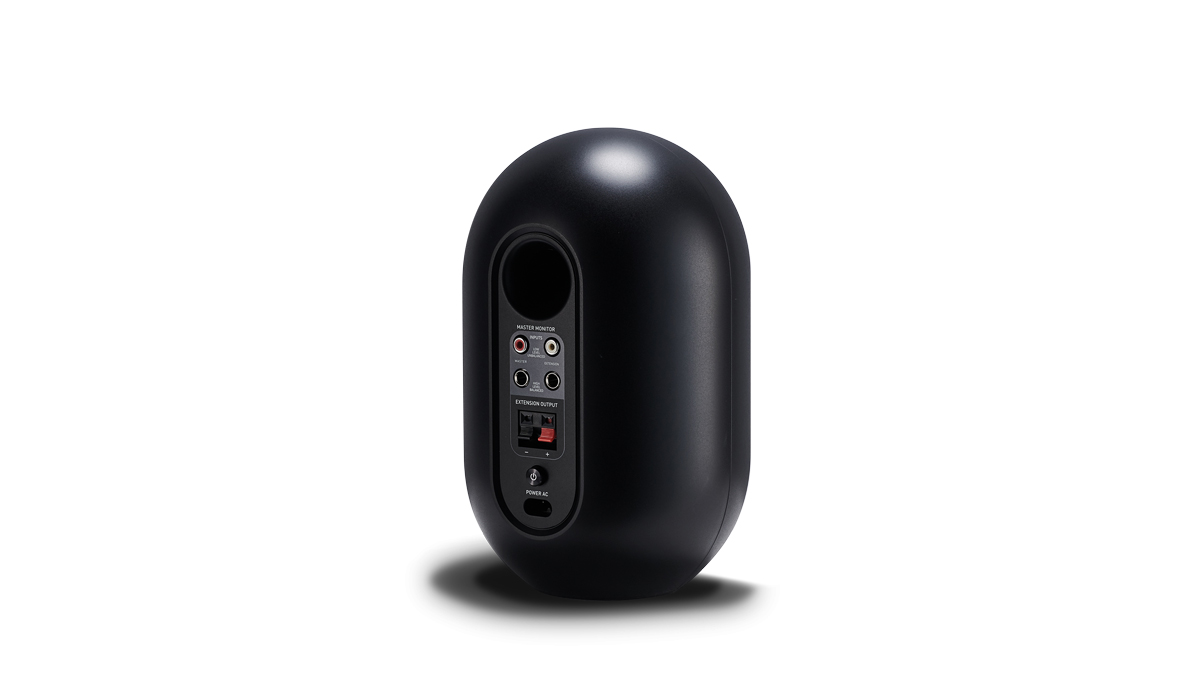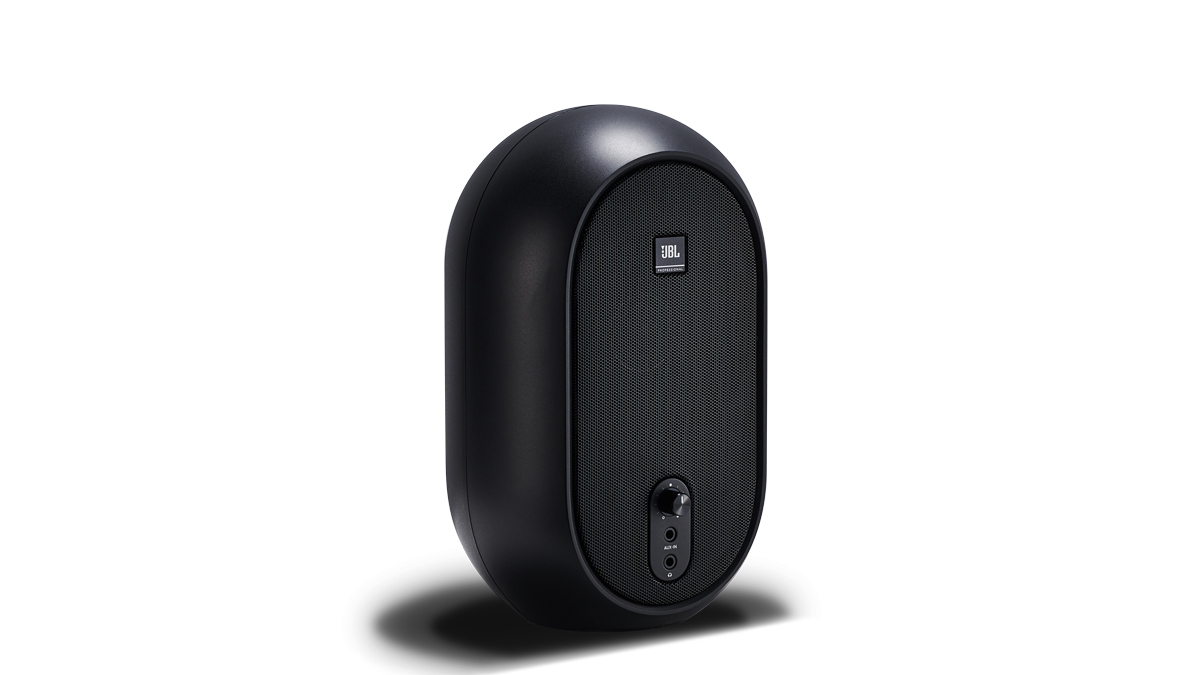MusicRadar Verdict
A stylish, compact monitor that delivers decent sonics, flexible connectivity and solid build all at a very attractive price.
Pros
- +
Well built.
- +
Good mid range.
Cons
- -
No onboard room compensation EQ.
MusicRadar's got your back
The JBL One Series 104 is a compact powered reference monitor that’s designed with portability and convenience in mind.
It features an oval pill-shaped enclosure with a coaxial 4.5” LF driver and integrated 0.75” tweeter positioned behind a black metal grille. The design is rear ported to improve low frequency extension. Based on a master and slave configuration, not unlike typical computer speakers, the audio inputs, integrated power supply, notched volume control and onboard Class D amplification are all accommodated on the master unit. A standard speaker cable then connects to the second (extension) speaker via spring-loaded terminal connectors.

The rear input options are 1/4” TRS jacks and a pair of RCAs. There’s a further media player input on the front via a stereo 1/8” jack, and below this a handy 1/8” headphone jack. Rear inputs are sensibly labelled Master and Extension, so you can position and connect the monitors whichever way round that suits, without causing too much confusion. What’s more, the RCA and 1/4” jack inputs can both be used together, providing the potential to connect two sources simultaneously. In contrast, the 1/8” Aux-in input on the front input overrides the rear connectors, and as you might expect, the 1/8” headphone jack cuts the audio to the speakers altogether. The volume control is conveniently positioned on the front panel and incorporates a blue-white halo that illuminates when the speakers are powered.
The monitors are very well made and finished, and the moulded ABS cabinet incorporates a rubberised base, which is ideal for desktop positioning, keeping the monitors nice and stable. Given their compact size (about 10 inches tall) you might want to put them on a shelf or stand to get them up to ear height, but we did find the sweet spot pretty broad both vertically and horizontally.
Put your hand around the back and you can feel the rear port doing plenty of work
The 104 produces a surprising amount of welly considering the size. Put your hand around the back and you can feel the rear port doing plenty of work, helping to deliver lots of punch from kick drums and bass sounds. With no onboard compensation EQ, the only word of caution here is that if you need to position them very close to the wall or you’ll get additional low frequency build up, which could be misleading. We found they worked pretty well about 12 inches forward of the rear wall.
The speaker tuning also delivers plenty of midrange, ideal for balancing critical lead instruments in a mix. What’s more, though the low-frequency extension is inevitably constrained by driver size, the frequency balance is good at both low and medium volume levels, handy if you’re spending long periods in front of them. Our one criticism about the sonics is that the highs can be overpowering, resulting in the emphasis of sibilance. Once again, with no onboard EQ you can’t tweak this to taste. The One Series is very competitively priced - something to note in light of the minor niggles we’ve mentioned - and overall we found the One Series 104 to be a surprisingly good little monitor.
- More of the best budget studio monitors
Want all the hottest music and gear news, reviews, deals, features and more, direct to your inbox? Sign up here.
Jon is a London based platinum award winning mixer, producer, composer and club remixer with a diverse CV that spans dance, pop, rock and music for media. He’s also a long term contributor to MusicRadar's music technology tutorials and reviews. Whether working alone or collaborating he usually handles final mixdowns, so you’ll also find MusicRadar peppered with his handy mixing tips.

